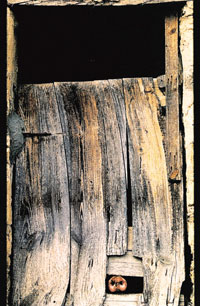Artists of Ibiza

Artists on Ibiza (Twenty-Six)
Christine Spengler
Among War and Dreams
Ibiza History Culture interview by Martin Davies, Cala Gració, Ibiza, January 2012
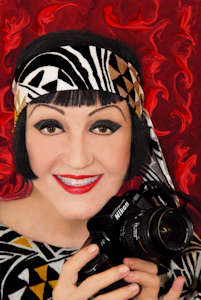 |
Recently awarded the Légion d’honneur for her unique contribution to photography, Christine Spengler has strong emotional ties to Ibiza that reach back to early childhood. The year 2010 saw a much praised exhibition of her war-zone images at the S’Alamera gallery on Vara de Rey (now a Hard Rock Café), as well as the appearance of Ibiza & Formentera eternas, a book whose subtitle, La serenidad recobrada, pays tribute to the healing powers of our archipelago. Its colourful collages depict a tranquil sea-girt refuge where Punic deities rub shoulders with starfish, Es Vedrà peeps above a hibiscus, and smiling payesas are framed by oysters and scallops. The goddess of love and war, Tanit, presides over all. Christine welcomed Ibiza History Culture to her island hideaway just outside San Antonio, a villa built in the early 1960s by her aunt and uncle. Luxuriant vegetation screens the extensive property from the outside, and nature’s rustlings provide a perfect backdrop for exploring an unconventional trajectory, full of startling artistic surprises.
Ibiza History Culture: Perhaps we can begin with the part of your work most familiar to our readers. Were you the first woman war photographer?
CS: No, there were a number of pioneers: Margaret Bourke-White in the First World War, Gerda Taro – Capa’s lover – who was run over by a tank in the Spanish Civil War, and the American Lee Miller in World War II who captured scenes at Dachau. Also Dickey Chapelle, an American photojournalist who died in Vietnam. There have been four French women photographers in recent conflicts, but I am the only survivor among these. Horst Fass (Associated Press) once said, “I have no idea why, Christine, but nearly all the female war photographers are French.” He was right: Catherine Leroy in Vietnam, Françoise Demulder in Cambodia and Beirut, Alexandra Boulat in Gaza and finally myself. In the whole world there have been less than ten women war photographers, and nearly all paid with their lives. Lee Miller and I are the exceptions. In Spain, by the way, there’s not a single male war photographer.
Ibiza History Culture: How extraordinary.
CS: I also differ from other women photographers in one important way: I have been in many different and far-flung places, always providing testimony to the mourning of the world. First Ulster, then Indo-China Western Sahara, Iran, Nicaragua, El Salvador, Lebanon, Afghanistan, Kosovo and finally Iraq.
Ibiza History Culture: Let’s return to your professional beginnings. Franz Kafka said that art needs craftsmanship more than craftsmanship needs art, and I wondered where you learnt the ‘craft’ of photography.
CS: In my case there was no apprenticeship. My career began in Chad during the Toubou revolt of 1970, when I grabbed the Nikon that belonged to my brother Eric, a fashion photographer. I was twenty-four and had never looked through a lens in my life, but it was an amazing experience. After spending time in a nearby prison, accused of spying, I decided that my life’s vocation was to act as witness to the world’s oppressed, using this camera. “You are the strongest of us two,” my brother said. “You will be the witness and the war correspondent.”
Ibiza History Culture: But how did you acquire your eye, your talent for framing a shot?
CS: Well, there was a sort of apprenticeship, but it was artistic, not photographic. After my parents’ divorce in Alsace, I went to Madrid to live with my uncle and aunt. Aunt Marcelita took me twice a week to the Prado, to show me the Velázquez Meninas. But it was Goya that shocked and moved me. If he was alive now, he would have been a photographer for sure, because he behaved just like one, capturing the horrors of war. I was seven at the time, but Goya’s scenes had an enormous impact. The photographer is someone who sees what others don’t see, and Goya helped me to see. During my early life I had no connection to photography. At the Madrid lycée I wanted to be a writer, and studied French and Spanish literature. I had no idea who Robert Capa was – I’m sometimes called the female Capra. In Vietnam it was the same with Don McCullin [leading British war photographer]. I had a totally virgin eye. I’d never looked at a picture magazine, and this was very good for me.
Ibiza History Culture: You had a fresh eye.
CS: Yes. Now that I’m trained in photographs I’m more aware that I mustn’t imitate others. If I see soldiers in Chile with boots caked in mud, I might want to take a photo – but Salgado has done it with the feet of Serra Pelada goldminers. Unique pictures are what photojournalist bosses want, and from the start I had something to offer, a different angle. My most famous picture, The Bombardment of Phnom Penh, came about because I was the only one there that particular Sunday. It’s not that I was better than my colleagues sitting round the hotel pool. When I grabbed my Nikon, they said, “Moonface [that’s what they called me], where are you off to in battledress? It’s Sunday – don’t be ridiculous. C’est repos de la guerre. Don’t you know? Soldiers take a break too, play the guitar.” But I was a débutante with no press card, a single camera, and a desire to learn. So I went and took the shot.
Ibiza History Culture: Among others.
CS: Yes, in Ireland (1972) there was Children of Derry and Carnival in Belfast, in Vietnam (1973) The Year of the Buffalo and The Departure of the Americans, in Cambodia (1974) The Bombardment of Phnom Penh, in Iran (1979) Guardians of the Revolution and Cemetery of the Martyrs, and in Afghanistan (1997) the Madonna. My eye as a woman gives me a certain tenderness. The boys call me ridiculous – “Let’s head for the hotel. Come on, baby, come along with us.” And I think to myself, “Once you all f–– off, that is when I take my pictures.”
Ibiza History Culture: You probably heard that Eve Arnold died last week aged ninety-nine. Did she do any war photography?
CS: No, she didn't, but she travelled widely like myself, and was one of the first women photographers in the Magnum agency. We were both pioneers in environments dominated by men, interested in women's place in society. Arnold also made an unusual documentary about Muslim women, Life Behind the Veil.
Ibiza History Culture: One to look up, obviously. Arnold once said that the difference between a fine photographer and an average one was having the wit to take advantage of accident.
CS: That is exactly what I believe. I like it.
Ibiza History Culture: Your work often contains a conflict of themes or ideas, for example Carnival in Belfast.
CS: Yes, when I spotted those boys in the street, I thought to myself, maybe they’ll be searched and the contrast with their little hats will be perfect. Perhaps they’re coming to laugh at the soldiers. I could see something immediately with my eye, and waited for the moment. I did the same with the widows in Teheran, looking for a contrast. I wanted to show the world that those widows are pretty, in spite of the chadors they wear. Or the woman with a Kalashnikov in Beirut. Here is a Goya, I thought. I’d been trained by him to see what was before me – the interesting side of it.
Ibiza History Culture: But you were also very reckless. Another secret, perhaps?
CS: When my brother committed suicide in 1973 I lost all sense of colour the moment the blue telegram arrived. I dressed completely in black for many years, and started searching for death. On the battlefield I never wore helmets or bullet-proof jackets, just jeans and sandals. Others were astonished, but I never told them the secret: that I’d lost my brother and wanted to die. I’m also a believer and faith helped me in wars, too. I’m not afraid of death, not afraid of crossing the road in Beirut.
Ibiza History Culture: So love of Goya, searching for death and faith are three key elements to your photographs. But the colour collages have very different sources, above all in Spanish popular culture.
CS: My arrival in Madrid in early 1950s was sad because of the divorce of my parents, but I loved the weeping virgins in the churches covered with jewellery, who reminded me of my Surrealist mother, Huguette Spengler.
Ibiza History Culture: What about the bullfights? The first book which showcased your collages was called Vièrges et toreros.
CS: We lived on the corner of two streets named after painters, Velázquez and Goya, and I loved both painters. It was Velázquez who taught me about Spanish dignity embodied in bullfighting, and it was Uncle Luís who introduced me to the subject in the first place. He was a keen aficionado who collected paintings by Gutiérrez Solana as well as posters that bore the names of famous bullfighters. I was curious about them, wanted to meet these figures invisible on the streets, so one day he took me to the ring. My portraits of these toreros, infused with the spirit of Velázquez, have the same concern as the war images: with dignity and to avoid all sensationalizing.
Ibiza History Culture: Have we left out any other influences?
CS: In Ibiza & Formentera eternas, you can recognize both Dalí and El Bosco [Bosch], especially The Garden of Earthly Delights – animals, plants and seashells. It is a homage to the islands of my childhood and sponsored by Ibiza’s Cámara de Comercio. My mother, to whom I dedicated the book, was always showing me works by Dalí. But Goya was my master, first and foremost, as Carmen Garrido of the Prado has written in her preface, especially when I began taking war photographs.
Ibiza History Culture: Let’s move on to Ibiza. There were 5,500 visitors to S’Alamera in twenty days, a huge number.
CS: I was there in the gallery each day, explaining the pictures. People wanted to know what it was like to be inside a burka, for instance.
Ibiza History Culture: And Ibiza is the subject of your new book. How do you feel about the changes around the villa you’ve known for most of your life?
CS: I’m proud to live in San Antonio, where I have just been named resident il·lustre, and the sunsets of Cala Gració inspire me. When I catch the bus in Ibiza town and head for San Antonio, the moment I hear the waves I feel back home. I love listening to the sound of squid boats as I wake up in the morning. When I first came there were only four houses in the area, the changes don’t bother me, because my inspiration is still intact. Every time I came back from a war zone I would go to Es Vedrà to forget the smell of gunpowder. With these baroque, colourful images I have found a way to exorcise the pain and suffering.
Ibiza History Culture: Finally, tell us briefly about your new passion: tango.
CS: I went out to Buenos Aires a year ago, and discovered another masculine world that I have thrown myself into. War, toreros, and now tango – I seem to enter deeply into the world of men. Tango for me is arrollador (overwhelming), nostalgic and here-and-now. Its beauty is the thing, something I feel deeply and have an urge to explore, like the world of la corrida [bullfighting]. I adore the magic of its music, its dance, and its attitude. It’s a whole way of life. And it can be danced anywhere. Even in Ibiza and Formentera, where we dance under the light of the moon – and where we have excellent Argentinian teachers.
Ibiza History Culture: Christine, it has been a privilege exploring the different worlds that lie behind your multifaceted work.
CS: The pleasure was mine, dear Martin. Now, let me show you now around the villa and the garden that have inspired me.
In addition to forthcoming exhibitions in Paris, Madrid, Warsaw and Buenos Aires, Christine Spengler is preparing three new books: the second part of her autobiography (part one was called Una mujer en la guerra), a novel featuring the Tuaregs of the Algerian desert (L’homme bleu) and El abrazo, a semi-fictitious memoir about tango set in Buenos Aires, Paris, Madrid – and Ibiza.
Her blog is www.christinespengler.blogspot.com
WAR ZONE Photographs by Christine Spengler
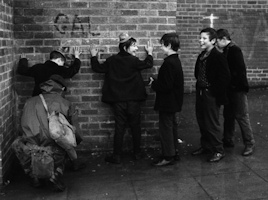 |
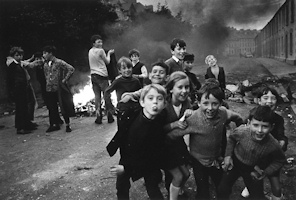 |
| Belfast, Northern Ireland (1972) |
Londonderry, Northern Ireland (1974) |
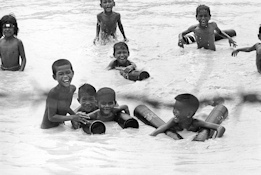 |
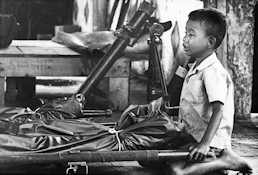 |
| Cambodia (1974) |
Cambodia (1974) |
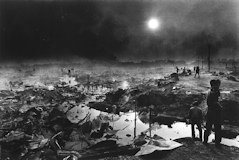 |
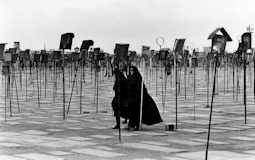 |
| Pnom-Penh (April 1975) |
Martyrs’ Cemetery, Iran (1979) |
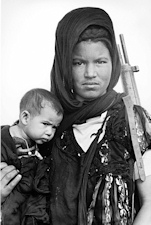 |
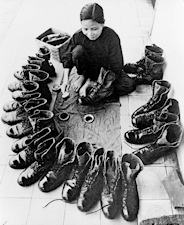 |
| Sahara Occidental (1976) |
Vietnam (1977) |
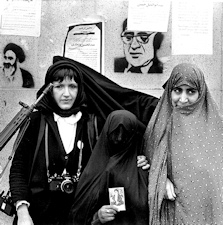 |
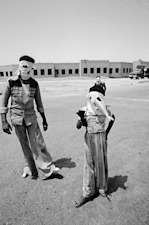 |
| Christine Spengler, Iran (1979) |
Khorramshar, Iran (1979) |
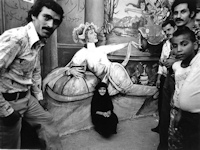 |
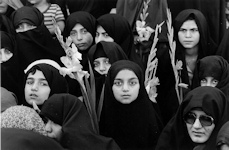 |
| Christine Spengler, Iran (1979) |
Khorramshar, Iran (1979) |
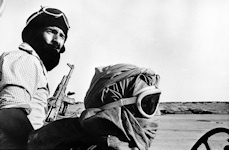 |
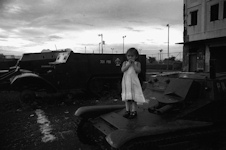 |
| Sahara Occidental (1981) |
Managua, Nicaragua (1981) |
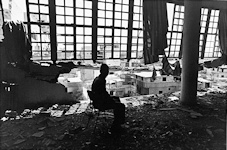 |
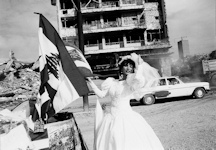 |
| Sabra Psychiatic Hospital, West Beirut (1982) |
Lebanese Bride, Beirut (1996) |
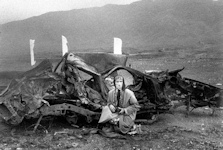 |
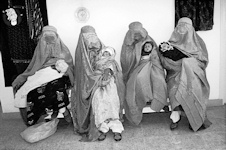 |
| Christine Spengler, Afghanistan (1982) |
Afghanistan (1997) |
DREAM Photographs by Christine Spengler from her book Ibiza & Formentera Eternas
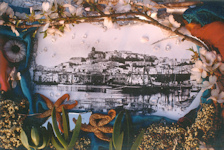 |
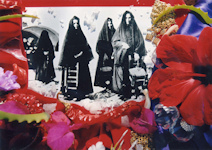 |
| El Puerto (Book Page 2) |
Dias de Luto en Ibiza (Book Page 17) |
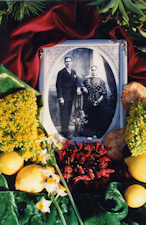 |
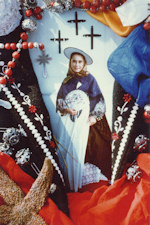 |
| Día de Boda (Book Page 26) |
San Agustin, Ibiza (Book Page 28) |
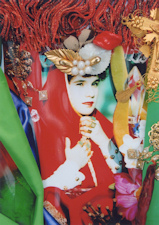 |
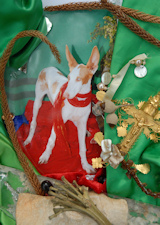 |
| Payesa de Mis Suenños (Book Page 40) |
El Podenco ‘Cobra’ Jesús, Ibiza (Book Page 41) |
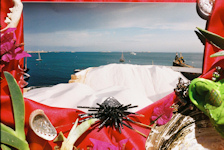 |
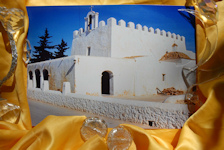 |
| Las Salinas, Ibiza (Book Page 50) |
El Blanco de Ibiza, Iglesia de Sant Jorge, Ibiza (Book Page 57) |
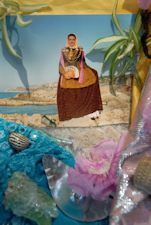 |
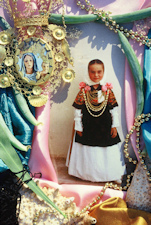 |
| Formentera (Book Page 74) |
Claudia, San Antonio, Ibiza (Book Page 77) |
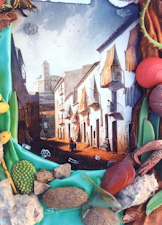 |
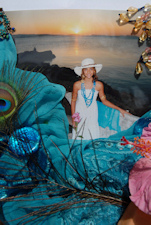 |
| Ibiza Antigua (Book Page 89) |
Sirenita de Cala Gació, Ibiza (Book Page 95) |
BIOGRAPHY CHRISTINE SPENGLER
Christine Spengler was born in France but spent her childhood in Madrid following the divorce of her parents. She studied French and Spanish literature with the intention of becoming a writer.
1970
She was reborn in Chad the day she took her first photograph with the Nikon her brother Eric gave her. Her first shot captured barefoot Toubou rebels shooting their Kalashnikov rifles at French helicopters. Her mind was made up: "I will learn my trade in the field and will be a war correspondent testifying to just causes."
1972
Northern Ireland. Her first famous photograph distributed by Sipa-Press, Carnival in Belfast, an image of Irish children making fun of English soldiers who were frisking them, was published by Life, Paris-Match and Gaceta Ilustrada, amongst others.
1973: Vietnam. She set off for Saigon with a one-way ticket and worked for 15 US dollars a photo for Associated Press. She was the only female photographer in situ.
Her first famous photographs: Saigon enters the year of the buffalo, which was published in The New York Times, and American soldiers farewell which shows a young Vietnamese girl shining the boots of American soldiers, just hours before peace was declared.
Shortly after this, she received news by telegram of her younger brother Eric's suicide in Paris. For the next ten years, she would forge ahead by photographing the world's sorrow in black and white in Cambodia, Nicaragua, El Salvador, the Western Sahara, Lebanon, Iran, Eritrea and Afghanistan for the world's most prestigious magazines.
1975
Cambodia. She photographed the bombing of Phnom-Penh by the Khmer Rouge. Her photo was published all around the world.
1976
Christine Spengler returned to Paris and started working for the Sygma Agency. First photos of the Polisario freedom fighters in Western Sahara for Time Magazine.
1981
Reportages in Nicaragua and El Salvador.
1983
Alsace. All Saints Day. Christine began the forbidden pilgrimage at the tomb of her brother Eric. Like the wives and sisters of the martyrs in Iran, Bolivia and Mexico, she decided to devote small funeral altars to the memory of those who have disappeared. For the first time she took colour shots, taking portraits of the deceased, surrounding them with personal objects (pearls, rose petals and broken bits of glass). These photographs were published in Zoom and PHOTO Magazine and exhibited in the Museum for Photography (Musée de l'Elysée) in Lausanne, Switzerland, along with her war photography.
1982-1984
Lebanon. After being arrested by Islamic militia and scheduled for execution after a five-hour trial before a revolutionary court, Christine was freed in extremis thanks to the Druze leader Walid Jumblatt.
Her nights were filled with fantastic dreams. The proximity of death had finally revealed the beauty of the world to the artist.
1985
International Photography Festival in Arles, France. Audio-visual presentation in the Théâtre Antique, alternating black and white war photographs with dream-like colour photographs called Le deuil d'Eric. They were praised by the famous French newspaper Le Monde.
1984-88
Paris - Madrid. Using a 50 mm lens she shot new dream-like images as a homage to life. This led to the creation of Ensueño polisario, Sáhara prohibido and, above all, the Vírgenes y Toreros series, which paid tribute to her childhood in Madrid. They were exhibited in Arles, Paris (Mois de la Photo) and in Madrid (Mercado Puerta de Toledo).
1989
Retrospective Quinze ans de guerre at the Museum for Photography in Lausanne, Switzerland.
1990
She worked for Vogue, Christian Lacroix and Yves Saint Laurent.
She started working on still lifes.
1991
She published her first book in France, Une femme dans la guerre (Ed. Ramsay). She showed her work in a retrospective anthology De la Guerre et du Rêve in the Espace Photographique des Halles, Paris. She appeared on the television shows of Bernard Pivot, Henry Chapier, Jean-Marie Cavada, Bernard Rapp, Frédéric Mitterand, etc.
1994
She returned to Lebanon commissioned by Marie Claire magazine and made a film with the producer Philippe Vallois.
1995
She returned to Saigon for the Peace Anniversary festivities.
1996
She participated in a collective exhibition at the Aperture Gallery in New York. Group exhibition at the Centre Georges Pompidou in Paris, Face à l'histoire. She represented photography on Laure Adler's television show, Le Cercle de Minuit.
1997
She reported from Afghanistan for a month on women oppressed by the Taliban for La Revista, the magazine published by the newspaper El Mundo, Paris Match and The New York Times. She participated in a group exhibition organised in thirty countries by Doctors of the World on International Women's Day.
1998
She returned to Cambodia upon the death of Pol Pot to make the film Retour à Phnom Penh with the producer F. Strouvé for a France 3 programme: Double Regard.
Retrospective exhibition in Beirut as part of the first Photography Month held in Lebanon.
She won the SCAM Award in Paris.
1999
She participated in the television show the best one hundred pictures of the century with a feature on the survivors of her first photograph in Northern Ireland. Her autobiography Christine Spengler: entre la luz y la sombra. Autobiografía de una corresponsal de guerra was published in Spain by El País-Aguilar. Imágenes para la dignidad, an exhibition of photographs of Iran and Afghanistan in PhotoEspaña 1999.
2003
Her books Los Años de la Guerra (bilingual edition in French and Spanish) and Virgenes and Toreros (Spanish and French) were published by the publishing houses Marval and La Fábrica.
Personal exhibition Los años de la guerra at the Canal Isabel II in Madrid during the photographic festival PhotoEspaña in 2003.
She travelled to Iraq to testify to the suffering of the Iraqi people.
2006: She published the first part of her autobiography in Paris, Une femme dans la guerre (Editions des Femmes).
Her war photographs were exhibited at the Moscow Biennial in Russia.
2007
She was awarded the title of Chevalier des Arts et Lettres by the French Ministry of Culture, which paid homage to her in the following statement: "I congratulate the combatant who was always able to see and embody hope in the midst of chaos."
2009
She is in the process of finishing the second part of her autobiography, Una mujer en la Vida, historia de un psicoanálisis, and a photography book about Ibiza, Ibiza y Formentera Eternas.
The President of the French Republic awarded her the Légion d'Honneur in recognition of her work as a war correspondent and artist.
2010
Exhibition at the Espace Pierre Cardin in Paris, Club Diario de Ibiza and at the Cultural Centre S’Alamera, Ibiza.
BOOKS by Christine Spengler
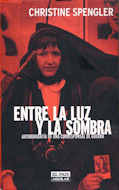 |
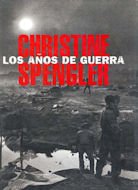 |
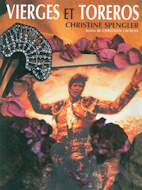 |
| Entre La Luz y La Sombra (Published El Pais 1999) |
Los Años de Guerra (Published 2003) |
Vierges et Toreros (Published 2003) |
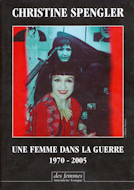 |
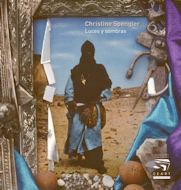 |
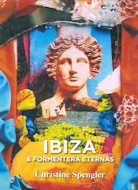 |
| Une Femme dans La Guerre 1970-1991 (Published 2005) |
Luces y Sombras (Published 2010) |
Ibiza y Formentera Eternas (Published 2010) |
All Pictures Courtesy Christine Spengler
Martin Davies

